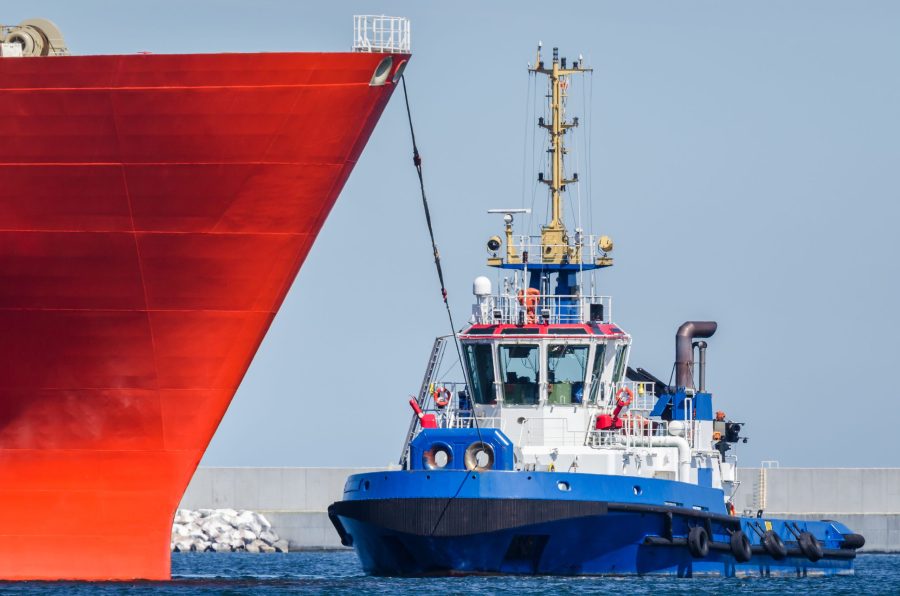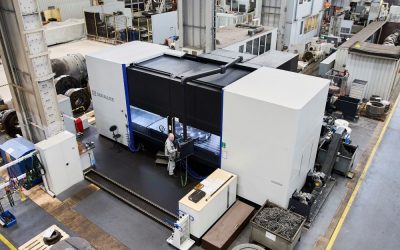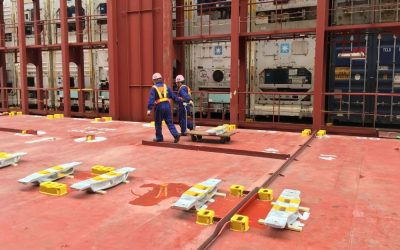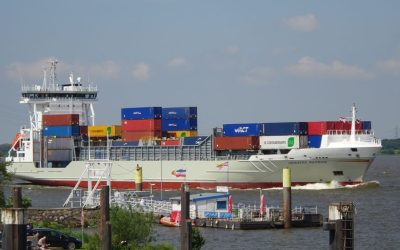Tugboat original equipment manufacturers (OEMs) have relied on hydraulic oil-driven winches for decades, but they are now starting to embrace energy-efficient, next-generation electric winches, writes Mikael Holmberg, winch and crane segment sales manager at ABB Drives
Hydraulic winch systems have been adopted by nearly 70% of vessels across the world, and they’ve stood the test of time because they offer durability and high power density. However, increasingly sophisticated electric winches now offer superior performance, reliability, safety and, most importantly, energy efficiency. Consequently, winch systems comprising motors and variable speed drives (VSDs) are gradually starting to be deployed on tugs, replacing hydraulic power sources that require hydraulic motors, power packs and oil pipes.
Ports and international legislators increasingly demand reduced emissions, so electrification is good news for tug operators looking to move away from hydraulic systems. Indeed, motors and drives intended for use in tugboat applications should have complete marine-level certification to assure operators that they are fit for purpose. Electric winches also have comparatively less complex maintenance requirements and mitigate the risk of environmental damage caused by oil leakages.
Winch control
Specialised motors and drive packages for electric tugboat winches offer smooth, safe and precise operation, which reduces wear on the ropes and the winch itself. They also minimise emissions, which is a critical requirement for tomorrow’s tug technology.
At the heart of the technology is an integrated drive-motor-control based on a closed loop system with encoder feedback from the motor or drum. The encoder also monitors the rope length when the tugboat winch is in operation. The motor control platform, called direct torque control (DTC), enables higher accuracy in motor speed and torque control across the complete speed range and in all conditions. Housed within the drive, DTC offers torque control at low or zero speeds where the load needs to be started and stopped regularly without any jerking and with a load on the ropes, together with the built-in dedicated tugboat features.
DTC has facilitated the establishment of a specific tugboat winch control application with leading OEMs. The built-in tugboat winch control software in the drives governs the process of towing (escorting) the load while maintaining a specified distance between the tugboat and vessel.
The pushing function is used to maintain a constant tension by keeping ropes wound or unwound, without interfering with the operations when the tugboat moves around and pushes the vessel. The main task of the towing winch is to manage the process of towing (escorting) the load and pushing (constant tension). In escort mode, the winch acts as a brake where the operator sets the force limitation and aims to maintain the tow distance. The operator usually initiates the task after setting the rope length as the tow distance. They also set the maximum force limit via the force potentiometer or overriding controller.
Application supervision
At the start of the escort task, the operator disengages the mechanical brake but can intervene to haul or pay out the rope at any time. The system then automatically accepts the adjusted rope length as the newly determined tow distance. In the push mode operation, the winch keeps constant force or tension on the rope and – with a low force set by the operator – always pulls the rope in the winding direction. This mode is intended to maintain constant tension on the rope so that winding and unwinding can take place without obstructing operations. Again, the operator sets the winding force limit using the force potentiometer or overriding controller.
Some advanced motor-drive packages offer additional application supervision features, such as a roll alert and auto roll compensation option. This option comprises an external motion reference unit (MRU), an additional feature aimed explicitly at mitigating vessel roll.
The MRU sensor has a gyro and accelerometer to sense rotational orientation and linear motion. With roll compensation enabled, the maximum tension in the ropes (line force limit) automatically decreases or increases according to the measured roll angle value. The feature prevents tugboats from operating at dangerous angles, which potentially could lead to overturning.
Easier maintenance
When specifying electric drives for marine-type winch and hoist applications, it’s also worth considering ultra-low harmonic (ULH) and regenerative drive types. These drives are typically developed for harsh maritime conditions and offer precise speed and torque control for various motor types.
Ultra-low harmonic drives produce exceptionally low harmonic content to keep a vessel’s electrical network free from potentially damaging distortions or disturbances. Both drive types are suitable for use in new installations and retrofits of existing tugboat winches.
Regenerative drives also simplify installation by eliminating the need for an external braking resistor and requiring less cabinet space. If the network onboard a tugboat can accept the regenerated braking power, the drives can potentially regenerate 100% of the power continuously – resulting in significant energy savings. If this is impractical, other options, such as water-cooled braking resistors or batteries, might be required.
In addition, winch drives come with a removable memory unit that stores the drive’s software and settings for fast commissioning and easier maintenance. The software application’s flexibility makes it simple to add or modify winch functionality from a keypad or laptop with adjustable and programmable parameters.
Converting to electrical operation also improves safety and reduces maintenance costs by preventing unnecessary wear and tear caused by excessive tension on the winch ropes.






